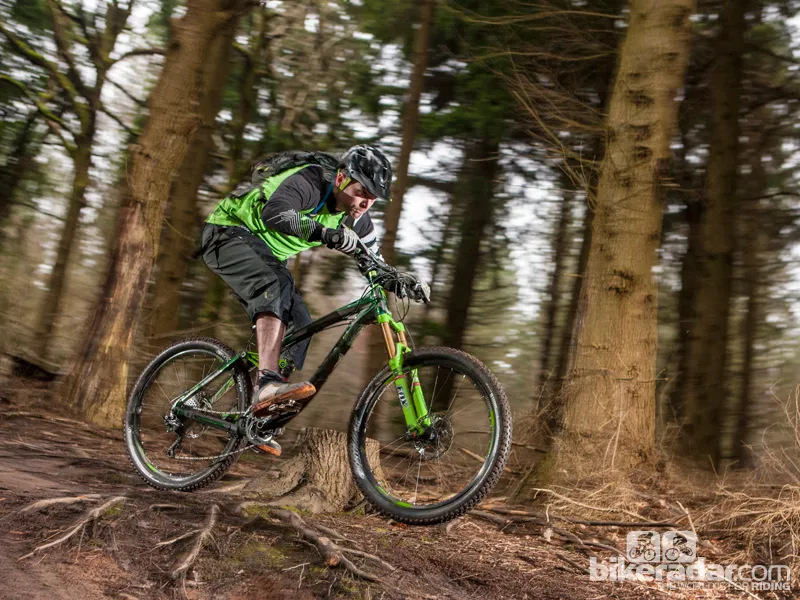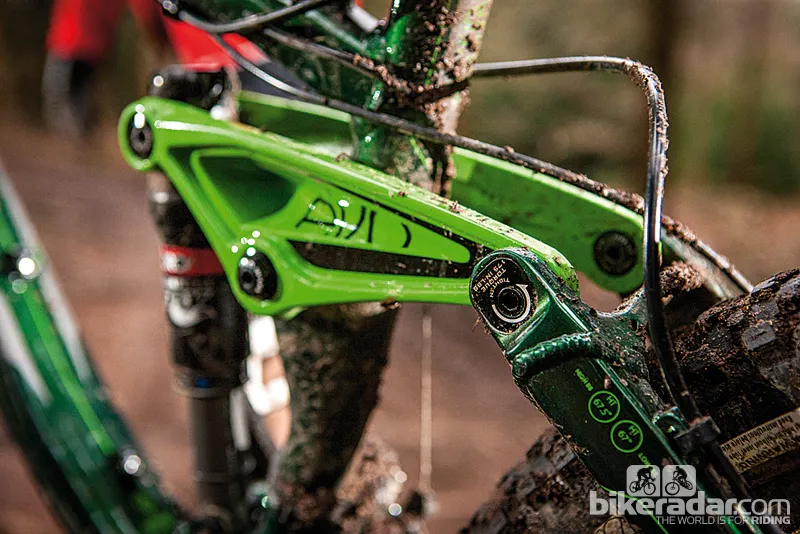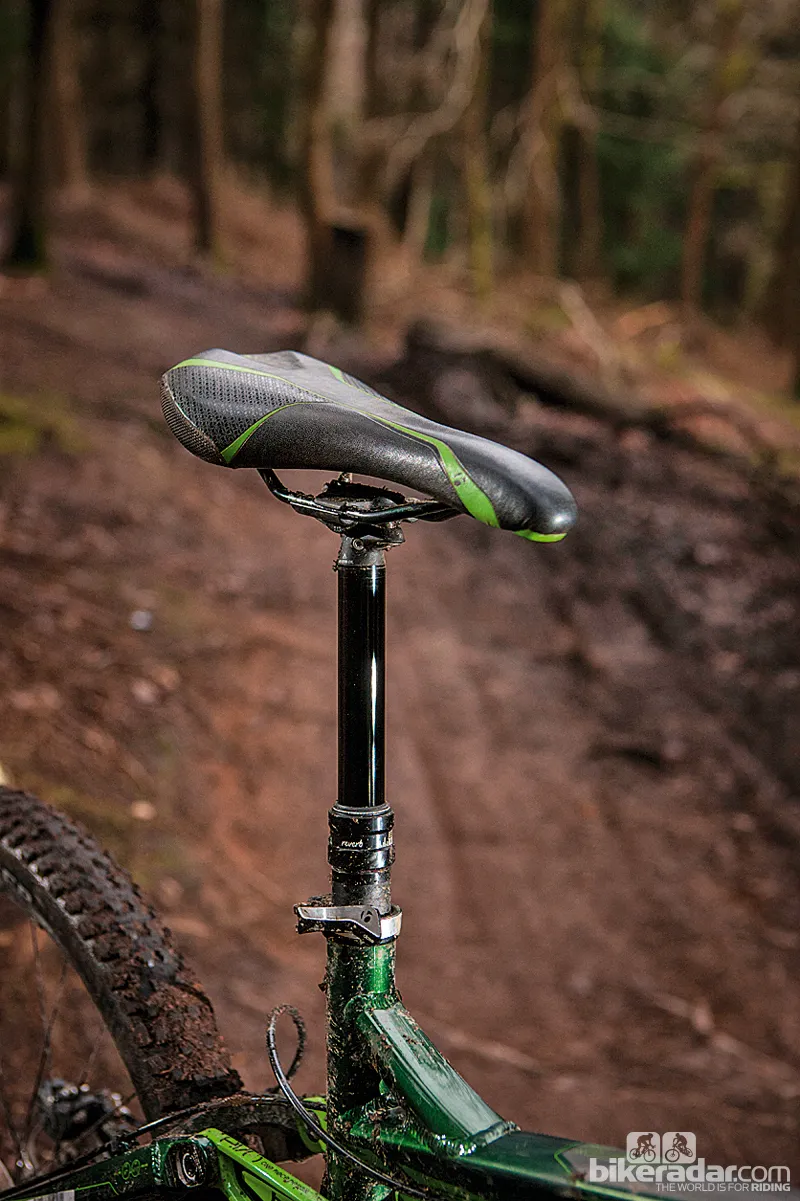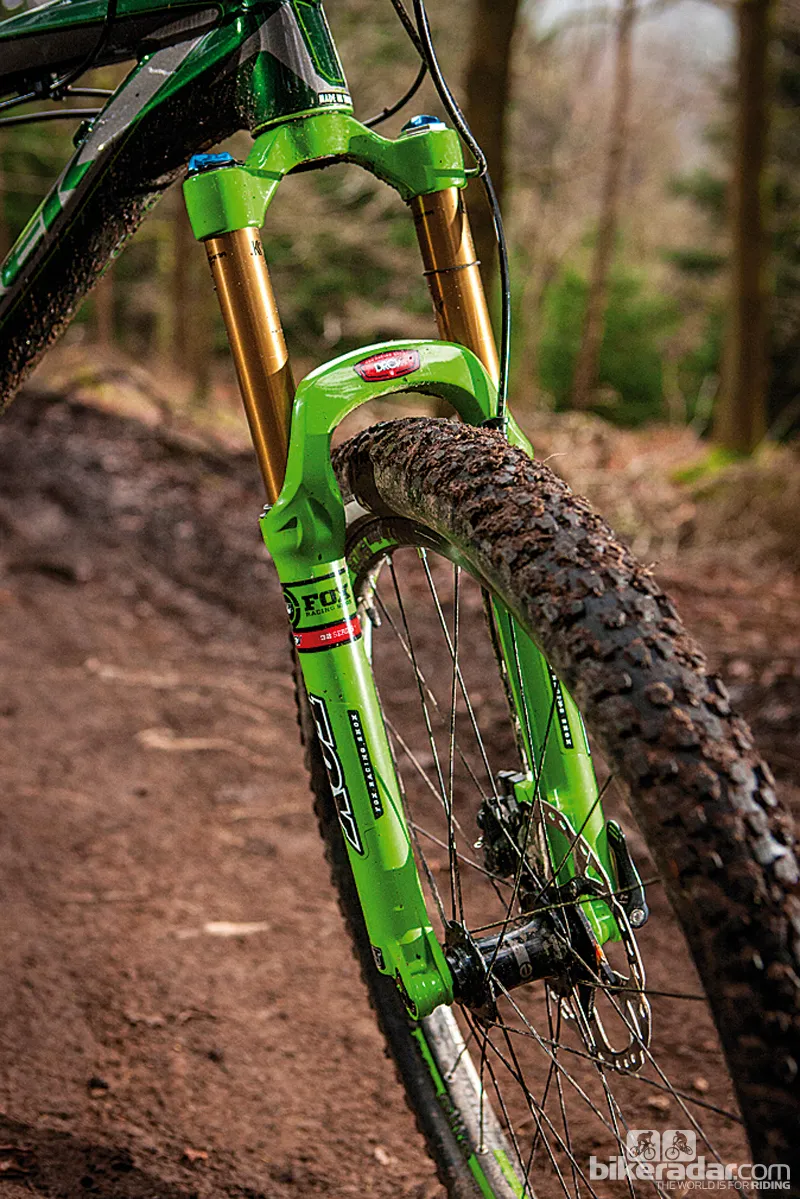Trek’s Remedy frame has stayed largely unchanged for a while, but this year’s version is tidier than ever. Sorted componentry completes a very easy to ride all-rounder, although it’s definitely more soft roader than hardcore hammer bike.
Ride & handling: Confidence boosting XC bike
Getting ready to ride is simplified by the included plastic sag indicators. These clip onto the fork leg and shock body to give a usefully accurate baseline pressure setting straight away.
It’s particularly useful on the DRCV dampers because they don’t feel like normal springs in their initial response. That’s because the twin chamber design only opens to full volume at a specific point in the stroke. The first part of travel ramps up quickly from a plush initial start to a stable pedalling platform, as though you’re riding a much shorter travel bike.
While it’s no lightweight, the frame stiffness is impressive for harnessing shoulder and leg power and the XR3 tyres roll okay once you’ve got it going. In other words, once you’re tapping out a tempo rather than trying to accelerate the Remedy cruises and hustles along singletrack and climbs like a tighter, shorter travel rig.
The ABP back end is impressively balanced in relation to pedalling forces, so there’s no obvious tug or kickback when you’re trying to torque your way up a rough, rock/root stepped climb.
The handling is very well balanced otherwise, with enough stem length to keep the front wheel straight on steep climbs but not so long it gets outwitted when you’re weaving it through tight tree switchbacks. The Bontrager tyres are predictable in most conditions.
The frame is impressively stiff from bars to thru-axle back end, and while the Fox 32 fork can feel soft and flexy up front it’s more forgiving than a 34 or Revelation for traction and comfort.
The Mino Link chip gives you the option of slightly quicker handling and more ground clearance when pedalling if you’re in a cross-country mood, or slacking it out and dropping it a fraction for a more surefooted feel (which is what we went for). Being able to drop and raise the saddle instantly is a massive bonus when pushing the pace on roller coaster trails.
The pivot kinematics mean it sucks up mid-sized chunder and bigger speed killing blocks well for a 26in-wheeled bike. Bigger hits also open the second shock chamber automatically for a more linear and lump-hungry feel, and the back end feels seamless but not soggy even when slamming through serious geology.
The same twin chamber system also makes the fork generously plush and linear when you’re plonking down steps off the brakes or rattling over rocks. The lurch from mid-stroke ramp-up to sudden deep dive can catch you out if you’re already pushing the limit of braking/cornering traction and our more aggressive riders really didn’t like it.
Unlike ‘normal,’ single air-chamber forks you can’t just add a bit of oil to make the spring more progressive (ie, get harder to compress as it goes), and Trek’s new volume reducer shim – which does the job instead – isn’t available yet. Using the Trail setting of the CTD damper is enough to noticeably reduce unexpected nosedive, but this fork is just too willing to plunge in big compressions and berms.
Trek’s 2013 Remedy is the most sorted yet – it allies great kit to a confidence-inspiring and friendly character. The smooth DRCV suspension helps even moderate riders milk every millimetre of travel, although more aggressive riders are definitely going to want the fork-firming bungs for more predictable braking and berm-carving performance.
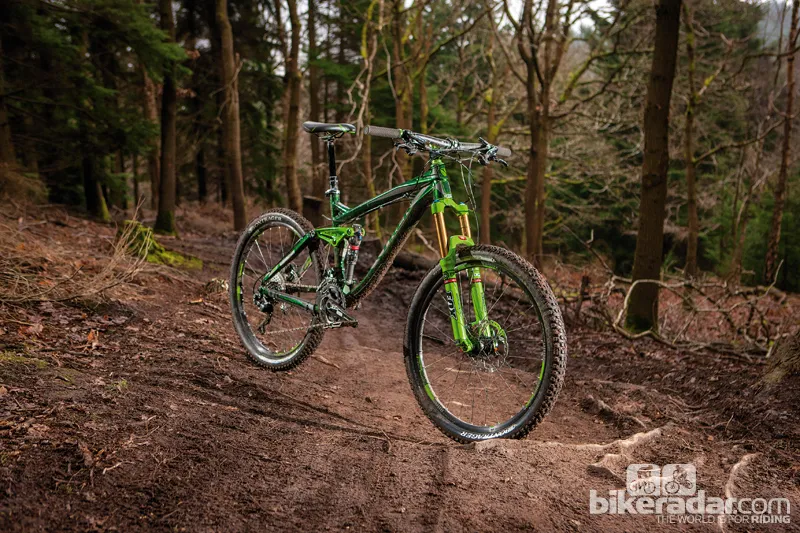
Frame & equipment: Well-evolved and clever
The Remedy frame outline hasn’t changed much since the double-chamber DRCV (Dual Rate Control Valve) shock was added to the bike for 2010. A stiff, tapered E2 head tube, a double-curved down tube, that broad top tube, the single-piece magnesium ‘Evo’ shock linkage and the 142x12mm screw-thru rear axle still keep everything securely in line.
The Full Floater shock – squeezed between an extended swingarm tip and the shock linkage – plus the Active Braking Pivot (ABP) rear pivot design are proven performance enhancers, while a switchable Mino Link on the seatstay can slacken angles by half a degree and drop the bottom bracket 10mm. A plastic down tube guard and chainguide tabs mean it’s ready for whatever roller system radical riders might want to fit, and whatever rocks fly as a result.
The Reverb dropper post is externally routed as standard, but there’s an exit hole for internal routing if you upgrade to the Stealth version of the post. The rear brake mount is IS (International Standard) rather than the new-style post-mount, and the bottom bracket is a conventional screw-in cup style. The second one may not be cutting edge, but will please those who value easy bearing replacement and proven reliability over a contemporary oversized or press-fit crank setup.
Trek have also stuck with a conventional triple chainset to give a full 30 gear spread. Shimano’s ultra reliable XT stop and go gear is a welcome sight for high-mileage-with-low-maintenance fans, and the clutch rear mech keeps the drivetrain quieter.
Bontrager were one of the first to introduce wide yet light trail wheels, and these Rhythm Elite wheels wrapped in big, usefully grippy but not too slow XR3 rubber are a great match for the ride.
The 720mm/80mm cockpit is a decent balance between power assisted steering, reasonable breathing space and tree punching inconvenience, and the fat Bontrager saddle won’t cripple you if you go for a quick blast in your boxer shorts. Though your neighbours might if you don’t wear anything else.
The slick gold Kashima coating on the custom (Trek-only) DRCV Fox fork is a nice touch, and staying with 32 rather than 34mm legs saves half a pound of weight. While the rear shock isn’t similarly gilded, it does share the dual chamber internals and synced CTD (Climb Trail Descend) damping.
This article was originally published in What Mountain Bike magazine, available on Apple Newsstand and Zinio.
